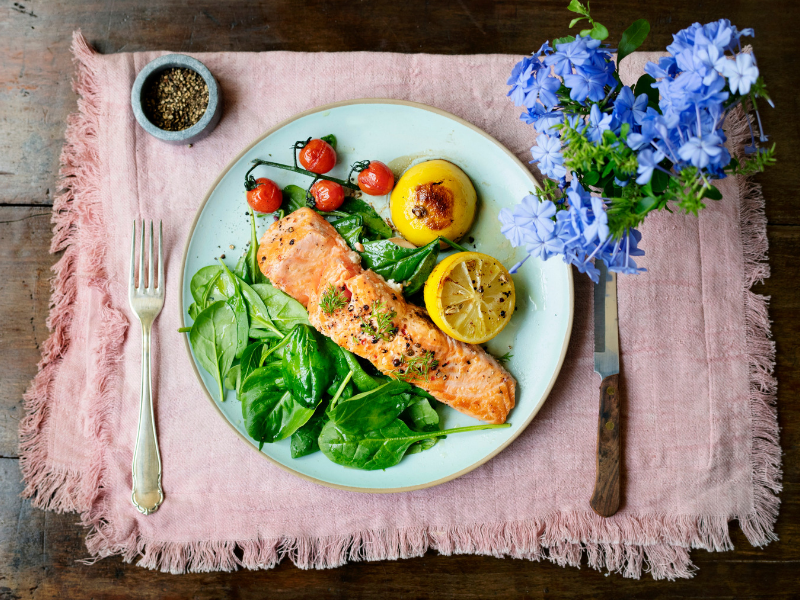Having a long-term condition can be down-right exhausting. For example, you might be on daily medications on top of having regular appointments with your doctor. Many people who have health disorders even attempt a few of the top wellness trends before finding the best methods to control their disease.
However, no matter what medical treatments you must keep up with, adopting the right diet for your condition can help restore wellness to your daily life.
For most of us, we know what makes up a “healthy” diet, but having an illness can make it necessary to throw all of that knowledge out the door. You might need to steer clear of some foods and load up on others to get what you need to alleviate symptoms.
Here’s a look at the importance of foods and a few specific health conditions that can be controlled by the right diet.
Looking for more health advice?
Listen to our interview with a plant-based diet enthusiast
Understanding the Importance of Foods
Food is a necessity of life, not just something you reach for when you start feeling hunger pains. It provides vitamins and nutrients that give you energy for daily life functions. Your personal tastes, culture, and even family preferences impact your food decisions. But, when you’re not feeling your best, taking a good hard look at your diet is a good idea.
More than 100 million Americans have a preventable chronic illness, and many of these diseases are related to poor eating habits. As hard as it may be to believe, even some healthy foods can make you sick. Take milk and dairy for example. You might think that low-fat milk and dairy products are a part of a well-balanced diet, and for most people, they are.
However, more than half of the population has lactose intolerance, so drinking milk and eating products like cheese and ice cream can cause severe stomach and digestive issues.
Another thing to consider when you’re finding the best diet for a health disorder is any special diets. If you’re eating the essential foods on a keto diet but start to experience new health symptoms or general illness, you might need to change your menu to see if the problems subside.
If you’re suffering from symptoms that you think might be related to the foods you eat, consider keeping a food journal. Buy a cute notebook or use an app on your phone to keep a running list of foods you consume and any symptoms you might have. If you’re looking for a few apps to try, here are some of our favorites:
- MyFitnessPal: This app is one of the most popular out there. It has more than two million food items in the diary, so finding precisely what you’re eating is simple.
- Yazio: Utilize this app to keep a running list of the foods you eat and your daily activities. You can even use the built-in barcode scanner to search for foods you want to include in the diary.
- YouAte: If you’re looking for a novel way of keeping your food diary, this app might be just what you need. YouAte allows you to snap pictures of your foods throughout the day, rather than typing in each meal or searching through a database.
After a week or two, review the diary for a connection between specific foods and your worst symptoms. Try cutting out the foods that you think might be causing your symptoms, and continue to track how you feel. Be sure to speak to your doctor about any concerning symptoms you might experience.
Choosing the right diet when you have a health disorder can take a little time and research. Here are a few conditions you can prevent or control when you modify your diet.
Varicose Veins
Do you have twisted, swollen, and painful veins that lie just under your skin on the backs of your legs? These are called varicose veins, and they are very common in women. You might not think that what you eat has anything to do with this condition, but varicose veins can be controlled or even prevented by lifestyle changes.
If you have varicose veins, try limiting white grains, like white bread and rice, in your diet. Choose whole-wheat bread, pasta, and brown rice instead. You should also decrease the number of processed sugars in your diet, like those from sweets. If you’re suffering from a sweet-tooth, reach for fruits instead. The sugars that naturally occur in foods like apples, strawberries, or bananas don’t place any extra stress on your vessels, which reduces your risk of varicose veins.
Gastroesophageal Reflux Disease (GERD)
Do you remember a day when you could order spicy foods and not wake up in the middle of the night? Gastroesophageal Reflux Disease, commonly called GERD or reflux, is a disorder of your digestive tract. The valve between your esophagus and your stomach weakens, which allows harsh stomach acids to back up into your esophagus.
The sensitive tissues that line the esophagus are irritated and cause pain and burning behind your chest bone. The good news is that you don’t have to suffer in silence. GERD is treatable with diet and lifestyle changes.
A few foods that trigger GERD symptoms include tea, coffee, citrus fruits, and those that are fatty or spicy. Try limiting these foods from your diet to reduce reflux symptoms. You might also want to avoid beer and white wine because they are both known to irritate GERD as well. If you’re looking for foods that are less likely to flare up your reflux, consider fresh or frozen vegetables prepared without added fat, baked potatoes, plain rice, or lean meats like fish and chicken.
Ready to adopt a healthy diet?
Growing and cooking your own food should be apart of your journey…
Rosacea
If you have bumps on your cheeks that look a bit like acne and make your cheeks look like you’re blushing, you might have rosacea. While doctor’s don’t know exactly what causes this condition, they have found evidence that supports a rosacea diet. The interesting thing about this diet is that it isn’t a one-size-fits-all solution to your symptoms.
The best way to discover what’s causing you to have rosacea flare-ups is to create a food diary as we discussed above. A few foods to be on the lookout for that are common rosacea triggers include spicy foods, alcohol, marinated meats, heated beverages, and some fruits and vegetables, such as citrus fruits and tomatoes. If you notice worse symptoms a day or two after eating these foods, cut them out of your diet to see if it alleviates your flare-ups.
Chronic Pain
If you have chronic discomfort, you know that the struggle is real. There are a few foods that are known to fight pain. Blueberries are loaded with phytonutrients which reduce inflammation and pain; oranges and strawberries have similar effects. Salmon is another food that is chocked full of goodness. The omega-3 fatty acids in this fish can relieve joint tenderness and swelling that’s common in diseases like rheumatoid arthritis.
If you’re suffering from stomach upset and pain, try a cup of mint tea. Peppermint oil relieves gas, cramping, and bloating.
Feeling Your Best
When you have chronic health conditions, you’ll do just about anything to control your symptoms and feel your best. Use this list of conditions and diets to get your symptoms under control. If you’re struggling with a different disease, research the best foods to relieve your symptoms and get yourself closer to health by maintaining the right diet.







